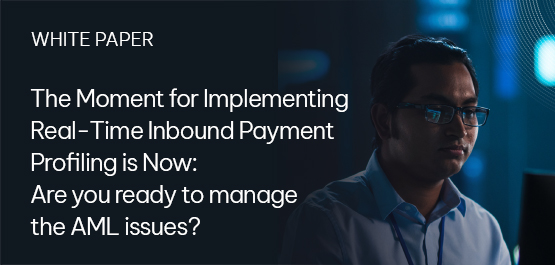The Moment for Implementing Real-Time Inbound Payment Profiling is Now: Are you ready to manage the AML issues?

Large parts of the world are moving to real-time payments, including the U.S. with The Clearing House (TCH) RTP, Canada with RTR, and Europe with TIPS/RT1. However, transaction monitoring of inbound payments for Anti-Money Laundering (AML), is stuck in batch processing.
Historically, receiving banks have not had the right incentives to invest in real-time inbound payment profiling. But this is starting to change in the face of increasing fraud losses, especially Authorised Push Payment (APP) fraud and the use of money mules. AML and fraud are starting to converge.
Could alerting and interdicting a payment here be construed as tipping off? Are there other AML issues facing banks that are looking to tackle mules and APP fraud as a beneficiary bank?
In this white paper, NICE Actimize’s Fraud and AML experts, discuss:
- The need for convergence of fraud and AML
- Why the time is now to move to real-time inbound payment profiling for both fraud and AML
- How to undertake it without creating AML issues for Financial Institutions
This paper focuses heavily on the U.K., as it is at the forefront of fraud and AML convergence, with the introduction of the Contingent Reimbursement Model (CRM) to help combat APP fraud. However, this is equally applicable to all jurisdictions that are moving to real-time payments.